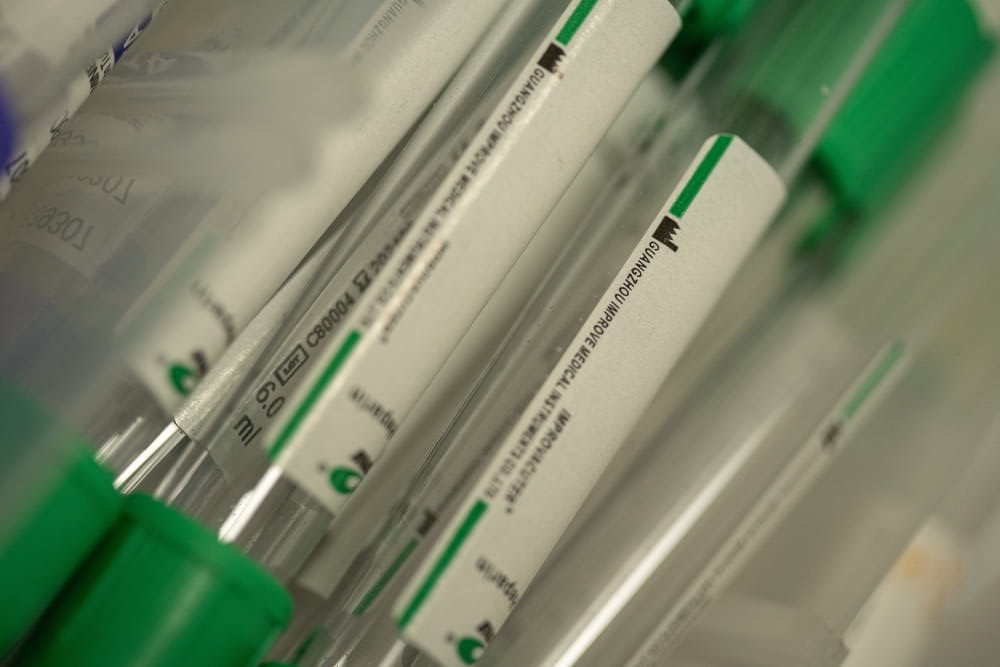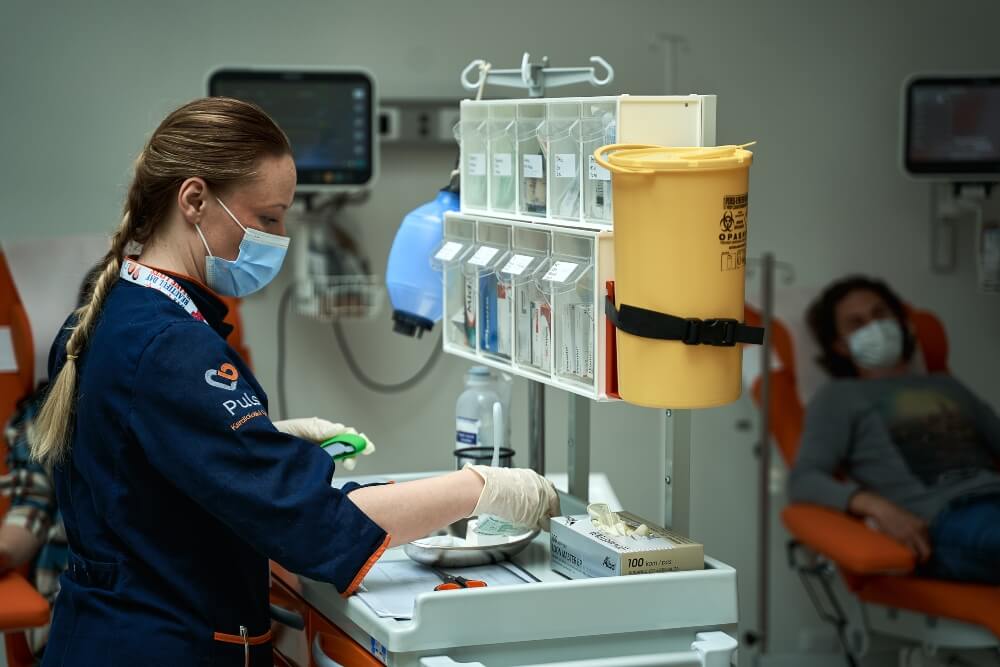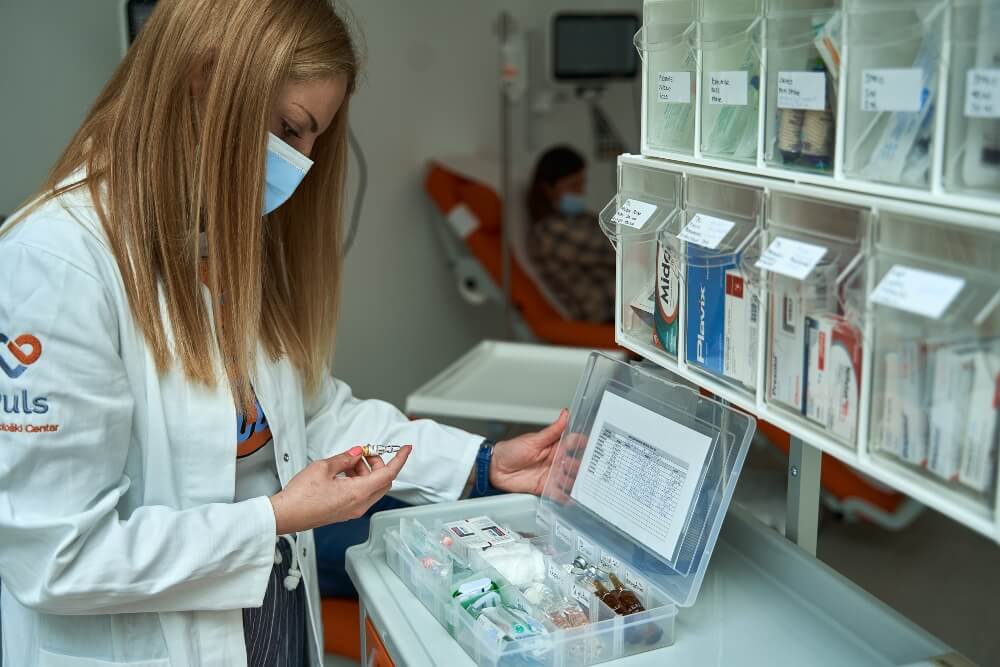Preparation for the cardiology examination also includes laboratory analyses, among which a complete blood count is mandatory, because it gives us extremely important information about the state of the heart, as well as the patient’s entire organism.
The interpretation of the blood count should always be left to experts, but it is not amiss to know the basic data that will help you understand the significance of this analysis.
Why is a complete blood count done?
Blood passes through every part of the body and the changes that occur in it also affect the change in the value of certain blood components. This analysis is done in order to gain a first, basic insight into whether there are any changes in the organism.
A blood test is not an all-powerful analysis, but thanks to it, the doctor will more easily decide in which direction the diagnosis should proceed.
A complete blood count is useful for detecting anemia, bacterial or viral infection, malignant diseases, problems with blood coagulation, nutritional status of the organism, and can also provide information on whether the organism was under the influence of harmful, toxic substances.
How often are blood tests done?
If we feel well and healthy, a complete blood count is done at least once a year, and ideally every 6 months for the purpose of regular monitoring of the body’s condition.
If symptoms of an infection or other problem appear, it is most likely that a blood test will be the first analysis that we will do according to the doctor’s instructions. Based on these results, the doctor will gain a better insight and will know whether we need more detailed analyzes and which analyzes are in question.
When signs of infection appear, it is an important sign to distinguish between bacterial and viral, so it helps the doctor in determining therapy and other treatment steps.
Patients who receive chemotherapy or radiotherapy due to undergoing treatments that can affect the blood, complete blood count should be done more often, and the frequency will be determined by the doctor who monitors the treatment.
Pregnant women are most often advised to do this laboratory analysis every 4 to 6 weeks, so that possible changes, among which the most common drop in hemoglobin, can be observed in time and therapy prescribed. Anemia is a very common phenomenon in the last trimester of pregnancy, and in some pregnant women it occurs even earlier.
What does a complete blood count mean?
A complete blood count with leukocytes includes determination of:
- the number of erythrocytes (red blood cells, the most abundant cells, responsible for transporting oxygen bound to hemoglobin from the lungs to other tissues)
- the number of leukocytes (white blood cells that have an important function in the body, are created in the bone marrow and protect the body from infections) and specification of the leukocyte formula (the total and percentage number of neutrophils, lymphocytes, monocytes, eosinophils and basophils is determined)
- the number of platelets (blood platelets that have the function of blood coagulation and stopping bleeding)
- the concentration of hemoglobin (an important component of red blood cells that transports oxygen from the lungs to the tissues)
- hematocrit (volume of erythrocytes in a unit of whole blood)
- erythrocyte index, which refers to the average size of erythrocytes (MCV), the average quantity of hemoglobin in erythrocytes (MCH), the average concentration of hemoglobin in erythrocytes (MCHC)
Blood count reference values
Blood count reference values are always highlighted on the result you get from the lab and they can vary by age and gender and even from lab to lab. In men and women, you will notice different values in certain situations, as well as in children and adults.
Deviation of the results from the reference values does not always mean the existence of a problem, always leave the interpretation of the blood count to the doctor, because only he can tell you by observing the whole picture what is at stake and what your next steps are.
We will give you general guidelines on what certain values can show, but the final word should be given to an expert!
At Pulse Cardiology Center, the best diagnosticians in the country are waiting for you, so leave the interpretation of analyzes and check-ups to them.

Erythrocytes (red blood cells)
- Reference values of erythrocytes in the blood for women are: 3.86 x 1012/l to 5.08 x 1012/l, and for men: 4.34 x 1012/l to 5.72 x 1012/l
- If the values of erythrocytes, hematocrit and hemoglobin are reduced, they may indicate some kind of anemia, and increased values may occur in healthy people, but also in those with certain conditions
Hemoglobin
- The normal value of hemoglobin in the blood is 110-180 g/L
- An elevated value occurs with hemoconcentration of the organism and with polycythemia
- Lower values are characteristic of anemia
Hematocrit
- In women, it is most often: 0.356 – 0.470 l/l, and in men: 0.41 – 0.53 l/l
- Apart from anemia, the hematocrit is reduced in patients with leukemia, and increased in those with hyperthyroidism, liver cirrhosis, burns and infections.
- Not every deviation has to mean a disease, it is most often reduced in pregnant women, and it also decreases throughout life
Sedimentation of erythrocytes
- 2-12 mm/h is a normal value
- Increased sedimentation can be a sign of inflammation, poisoning, rheumatic diseases
- During pregnancy and after childbirth, it is normal for the value to be higher
Erythrocyte index
- This is important in determining the type of anemia and is looked at along with other blood count values
- Normal values are as follows: MCV – 81 – 99 fl, MCH – 29-32.9 pg, MCHC – 310 – 350 g/l
Leukocytes (white blood cells)
- 3.9 – 10×109/l represent normal values
- When the body is under the influence of a viral infection, the number of leukocytes will be reduced, and increased if the infection is caused by some bacteria.
- Some drugs and chemotherapy can affect their number.
Thrombocytes (blood platelets)
- 140-450 x 109/l are normal values of platelets in the blood
- When the number of platelets is lower than the reference value, it can be a sign of spot bleeding, some malignant or autoimmune disease.
- Higher values can be a sign of increased blood clotting, which can result in the appearance of blood clots
How to prepare for a blood test?
The preparations for this laboratory analysis are not complicated, but it is necessary to know some rules, so that the obtained data are as authoritative as possible:
- 12 – 14 hours before blood sampling, you should not eat, only drink water is allowed
- the evening before blood sampling, the last meal should be light
- avoid smoking at least 12 hours before going to the laboratory
- do not consume alcohol the day before the analysis
- consult a doctor or laboratory technician about medicines if you are taking them, because sometimes it is necessary to take a break before the analysis
- avoid hard work and exertion the day before blood collection
- it is ideal to approach this analysis between 7 and 10 in the morning, before breakfast when the stomach is empty
If there is a suspicion of an infection after the blood test, malignant disease or any other problem, the doctor may refer you to further tests depending on your situation and condition.
Sometimes it alone is sufficient to determine the therapy, and sometimes it is only the first step in diagnosis.
In the Pulse Cardiology Center, it is possible to perform all the analyzes you need if you come to us for preventive and control examinations or if you come in because of pain and symptoms for the purpose of diagnosis.
Laboratory analyses, cardiology services, MSCT imaging services, everything is waiting for you in one place!
Choose the service package that suits you best and schedule your appointment!






